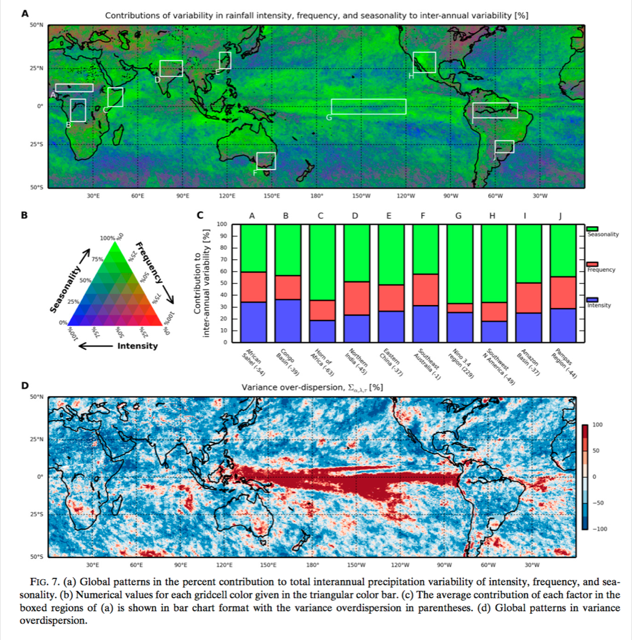Global patterns of the contributions of storm frequency, intensity, and seasonality to interannual variability of precipitation

Good, R., et al. (2016) “Global patterns of the contributions of storm frequency, intensity, and seasonality to interannual variability of precipitation”, Journal of Climate, doi:10.1175/JCLI-D-14-00653.1.
Abstract:Interannual variation in precipitation totals is a critical factor governing the year-to-year availability of water resources, yet the connection between interannual precipitation variability and underlying event- and season-scale precipitation variability remains unclear. In this study, tropical and midlatitude precipitation characteristics derived from extensive station records and high-frequency satellite observations were analyzed to attribute the fraction of interannual variability arising as a result of individual variability in precipitation event intensity, frequency, and seasonality, as well as the cross-correlation between these factors at the global scale. This analysis demonstrates that variability in the length of the wet season is the most important factor globally, causing 52% of the total interannual variability, while variation in the intensity of individual rainfall events contributes 31% and variability in interstorm wait times contributes only 17%. Spatial patterns in the contribution of each of these intra-annual rainfall characteristics are informative, with regions such as Indonesia and southwestern North America primarily influenced by seasonality, while regions such as the eastern United States, central Africa, and the upper Amazon basin are strongly influenced by storm intensity and frequency. A robust cross-correlation between climate characteristics is identified in the equatorial Pacific, revealing an increased interannual variability over what is expected based on the variability of individual events. This decomposition of interannual variability identifies those regions where accurate representation of daily and seasonal rainfall statistics is necessary to understand and correctly model rainfall variability at longer time scales.
